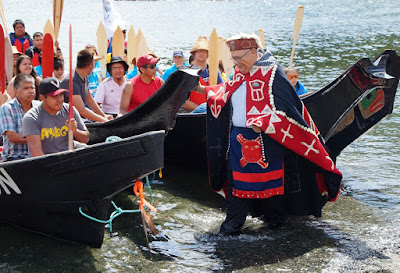Kava is a narcotic used
on some Pacific islands from roots of a plant of the same name.
Supposedly the best kava comes from the Vanuatu archipelago. In most
Western countries it is not legal but in Vanuatu it is and probably
is also more popular than beer. Possibly this is the reason why
Vanuatu is one of the safest countries in the world; kava has calming
influence, as opposed to alcohol.
There are numerous
taboos connected with the preparation and consumption of kava. Only
men can drink kava, it is taboo for women. On the island of Tanna
there is a forest clearing near every village where kava is prepared
and consumed; for women it is a taboo even to approach this place.
The drink is prepared by young men who chew the roots and spit it out
and then squeeze the juice with fabric made with coconut fibre. Older
men are not allowed to prepare the drink, they wait and make speeches
like the Greeks on Areopagus.
The drink is served to the men starting
with the most senior. The drink looks like
coffee with milk but tastes more like toothpaste solution. Men
sometimes shout some incomprehensible words after drinking a bowlful,
they say the kava speaks through them. One bowlful brings a feeling
of inner peace, three bowlfuls make it impossible to walk.
These pictures were taken in 2015 in Vanuatu, on the island of Tanna in a village at the foot of Yasur volcano.
 |
| Leaves of the kava plant. |
 |
| Roots of kava. |
 |
| Chewing kava. |
 |
| Squeezing the juice of kava. |
 |
| Squeezing the juice of kava. |
 |
| Kava in a coconut shell. |
 |
| Making speeches while waiting for kava. |
 |
| Drinking kava. |































